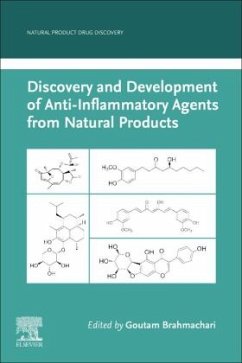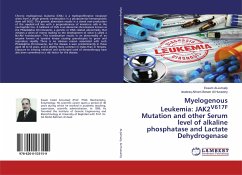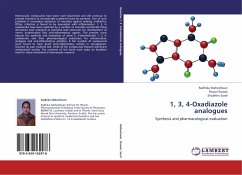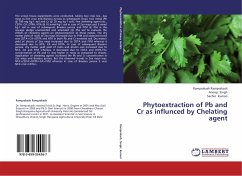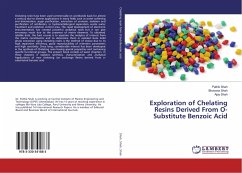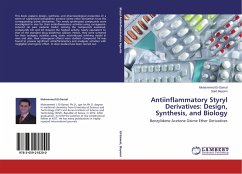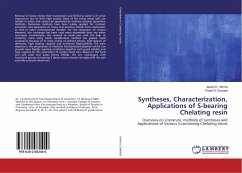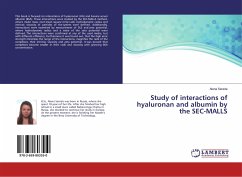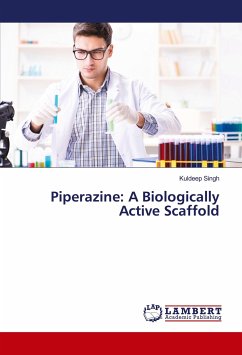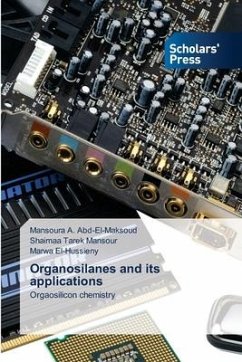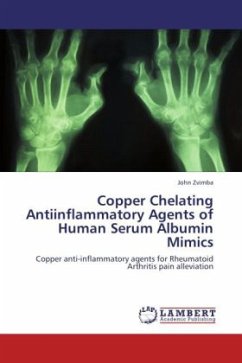
Copper Chelating Antiinflammatory Agents of Human Serum Albumin Mimics
Copper anti-inflammatory agents for Rheumatoid Arthritis pain alleviation
Versandkostenfrei!
Versandfertig in 6-10 Tagen
45,99 €
inkl. MwSt.

PAYBACK Punkte
23 °P sammeln!
This study investigated Cu(II) based anti-inflammatory agents for inflammation alleviation due to Rheumatoid Arthritis. Four copper chelating agents; [555-N], [H(555)-N], [H2(5555)-N] and [H2(556)-N] were synthesized and used for in vitro investigations to determine their formation constants with Cu(II), Zn(II), Ca(II) and Ni(II). The stability for the Cu(II) solution species were [555-N] [H(555)-N] [H2(556)-N] [H2(5555)-N] with significant Jahn-Teller distortion for the MLH-1 and MLH-2 species. Percutaneous skin absorption estimates for Cu(II) complexes indicated encouraging trans-dermal abso...
This study investigated Cu(II) based anti-inflammatory agents for inflammation alleviation due to Rheumatoid Arthritis. Four copper chelating agents; [555-N], [H(555)-N], [H2(5555)-N] and [H2(556)-N] were synthesized and used for in vitro investigations to determine their formation constants with Cu(II), Zn(II), Ca(II) and Ni(II). The stability for the Cu(II) solution species were [555-N] [H(555)-N] [H2(556)-N] [H2(5555)-N] with significant Jahn-Teller distortion for the MLH-1 and MLH-2 species. Percutaneous skin absorption estimates for Cu(II) complexes indicated encouraging trans-dermal absorption, though were poor in mimicking the Cu-Zn-SOD enzyme. Speciation modelling of Cu(II) suggested significant mobilization of Cu(II) by [555-N] and [H(555)-N] in vivo with insignificant interference from Zn(II) and Ca(II). The in vivo verification of the modelling results through animal experiments showed significant biological half life of the Cu(II) complexes. Overall, in vitro and in vivo evaluations showed potential of achieving exogenous trans-dermal administration, subsequent endogenous mobilization and retention of therapeutic effect of Cu(II) at sites of inflammation.



